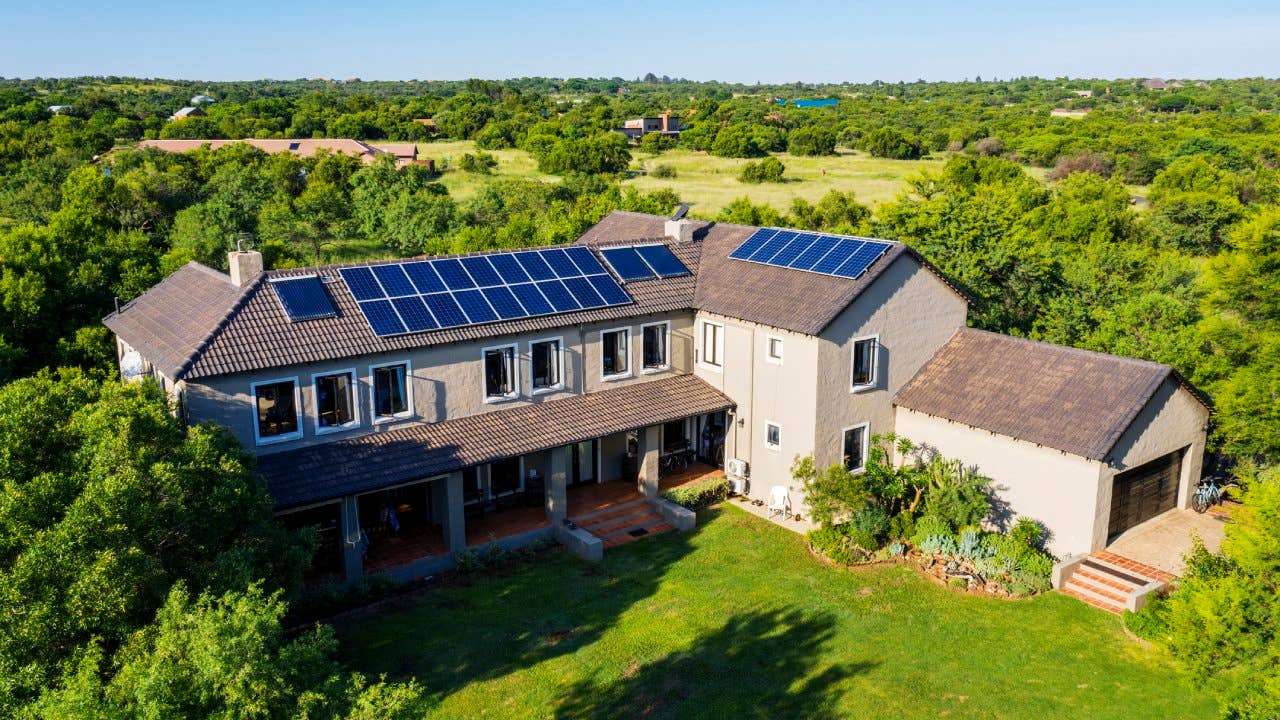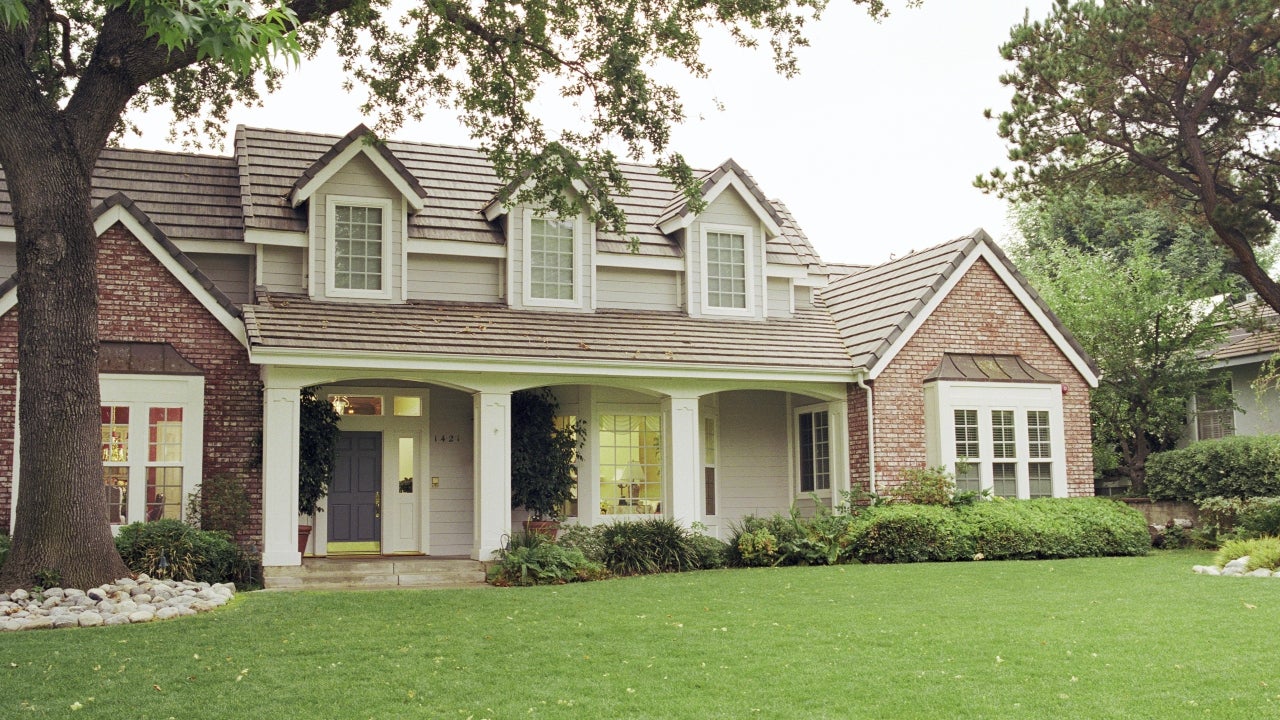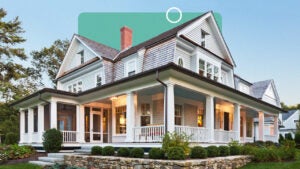Do eco-friendly homes sell better?

Investing in eco-friendly, energy-efficient home upgrades can help you save on utility bills and lighten your carbon footprint. But of late evidence is emerging that being green could bring in more green when you sell your home.
A Freddie Mac white paper analyzing energy-efficient-rated homes rated for their energy efficiency found that rated homes are sold for 2.7 percent more than unrated homes and, among rated homes, those with better ratings sold for 3 to 5 percent more than lesser-rated homes.
And of the 1,000 real estate agents surveyed in HomeLight’s Top Agent Insights for Summer 2022, nearly half (48 percent) said that homebuyers are increasingly prioritizing energy efficiency in their home search. Agents nationwide estimate that over the past 12 months, the value that energy efficiency adds to a home has increased 25 percent, from $6,556 to $8,246, the report says.
Also throwing a spotlight on the eco-friendly issue is the Inflation Reduction Act: Passed in August 2022, it offers tax credits and rebates for energy-efficient home installations and upgrades. So buying green may take on even more timeliness.
Read on to learn how and why having an eco-friendly home could up your home’s value and sales price, plus which energy efficient elements will likely be most attractive to buyers.
How eco-friendly features influence home sales
That environmental consciousness is becoming a selling point for properties is clear: In the National Association of Realtors’ (NAR) 2022 REALTORS and Sustainability Report – Residential, 63 percent of the surveyed pros said energy efficiency promotion in listings was “very or somewhat valuable.” How valuable is it? A recent analysis from Zillow concluded that homes with descriptions mentioning green features such as programmable thermostats, double-pane windows and smart sprinklers or lights could sell up to about a week faster and for up to 1.4 percent more than comparable homes without. Houses equipped with electric vehicle charging stations and drought-resistant landscaping could sell nine days faster.
Why the appeal of these homes now? Part of it could just be that, with environmental issues constantly in the news, energy efficiency is increasingly on homebuyers’ minds: They’ll have to invest in eco-friendly features like solar panels or electric-car charging stations eventually anyway, they figure, so why not buy a home that’s already equipped?
Another, more compelling motive: the skyrocketing prices in — well, everything. “In general, inflation is causing some buyers to be more cost-conscious, which is driving more interest in energy efficiency,” says Caroline Feeney, senior managing editor of HomeLight.
“The benefits of decreasing utility bills are only magnified when costs are rising in every sector,” she says. “Houses running off old systems will be more expensive to heat comfortably, and buyers are increasingly aware of that. Now and in the near future, thinking about cost savings will be really impactful for today’s buyers.”
“With the rising costs of living, the concept of low maintenance costs is very appealing,” agrees Miami-based HomeLight agent Zachary Dworsky. “It allows for buyers to invest those funds elsewhere.”
Limited impact of eco-friendly
That said, it’s not like the eco-friendly effect is highly dramatic. Although 78 percent of house-hunters report being concerned about the planet, only 15 percent are willing to pay more for a home described as environmentally friendly, according to the National Association of Home Builders (NAHB) report “What Home Buyers Really Want.” It’s only when potential buyers understand these features will lead to annual savings in utility costs that they’ll shell out more dough. Even then, the outlay’s limited: 57 percent are willing to pay $5,000 or more, on top of the price of the home, to save $1,000 a year in utilities.
And of course, the interest varies according to region and real estate market. For example, Realtors in the western U.S. say rooftop solar panels will increase property values more than Realtors in the South, according to the NAR sustainability report.
The Inflation Reduction Act encourages energy-efficient homes
The Inflation Reduction Act (IRA) includes dozens of federal tax credits and finances state rebates for different energy-efficient or clean-energy home features, systems and appliances. In general, homeowners can receive a 30 percent tax credit towards the installation cost of these features, through tax year 2032 (and a lesser amount for two years after that). The maximum total rebate across multiple upgrades is $14,000.
In effect, the IRA’s initiatives help set a new standard for energy efficiency in the home. When it comes to updating your home specifically to net the highest sale price, here are some of the most valuable enhancements.
- Updating Appliances: If your appliances are already in need of updating, take advantage of up to $840 in rebates to replace your stove, cooktop, range or oven with a high-efficiency electric one. Upgrading electrical wiring in general can garner as much as a $2,500 rebate.
- Installing a Heat Pump: A heat pump is a device that can both heat and cool your home while using 30-60 percent less energy than a traditional furnace or A/C unit. You can qualify for up to $2,000 in tax credits and up to $8,000 in rebates to install one in your home.
- Installing a Heat Pump Water Heater: A heat pump water heater is two to three times more efficient than an electric one. You can qualify for up to $1,750 in rebates and $2,000 in tax credits for installing one.
- Updating Windows and Doors: If you’re in need of new windows and doors you can upgrade to energy efficient ones and get a tax credit of up to $600 for windows and up to $500 for exterior doors. Repainting or replacing doors is one of the best ways to add curb appeal. There’s also a tax credit of up to $1,600 for general insulation, air sealing, and ventilation improvements.
-
Installing a solar roof: Adding solar panels or solar shingles to a rooftop qualifies for a 30 percent tax credit.
Which energy-efficient features are the most desirable?
Not all eco-friendly features are created equal in homebuyers’ minds, as the NAHB study found. Here are the ones that top the house hunters’ hit parade in popularity, with some approximate prices.
| Feature | % of Respondents Who Found It Essential or Desirable | Up-Front Cost Estimates |
|---|---|---|
| Source: National Association of Home Builders | ||
| ENERGY STAR-rated windows | 83 | $270-$800 or more per window, including labor |
| ENERGY STAR-rated appliances | 81 | Varies |
| Efficient (LED) lighting that uses less energy | 80 | $5-$10 per LED bulb |
| ENERGY STAR rating for entire home | 79 | Varies |
| Triple-pane insulating glass windows | 73 | $1,920 per window |
| Insulation higher than required by code | 68 | $1-$1.50 per board foot for spray foam (has the highest R-value) |
| Tankless water heater | 67 | $1,000 average |
Tips for making eco-friendly upgrades to your home
Should you revamp your home with an eye to resale in mind? Some thoughts:
- First, get an energy audit, recommends Melisa Camp, a Phoenix-based HomeSmart Realtor, educator, and climate restoration advocate, who points out that many local utility companies subsidize this expense. The report will direct you towards features that could benefit from improvement.
- Check with a real estate agent to assess local market trends: “Interest in energy-efficiency is highly market-dependent,” Feeney says. For example, according to HomeLight, 62 percent of agents in California versus 52 percent of agents in Florida said homebuyers are increasingly prioritizing eco-friendly elements in their home search. However, in the Northeast, many buyers prefer a more traditional home and value character and charm over energy-efficient features, she adds.
- Consider your home’s age: Older homes in particular are good candidates for upgrades, as they will likely struggle more to compete with energy-efficient new construction.
- Try less pricey improvements: Feeney suggests relatively economical upgrades, like insulating your attic, crawl space, and basement; swapping out incandescent bulbs for LED lighting; and equipping doors and windows with proper weather stripping.
- Consider large investments if you’re staying for a while: “If you’re ready to list in one month to one year, it’s not the time to invest in a ton of expensive home improvements solely for the sake of your home’s energy-efficiency,” says Feeney. If you’ll be in your home longer, you might consider bigger improvements, but mainly as issues crop up.
- Investigate tax rebates from the government: If you upgrade, you might save even more money thanks to federal and state government tax incentives, says Camp. As these are phasing out in the next two years, you might want to act sooner rather than later.
Marketing homes with energy-efficient features
Your home might boast the latest green features. But if potential buyers don’t know about them, these upgrades won’t help you when it comes time to sell. In short, you need to “make the invisible visible,” says Craig Foley, Massachusetts-based Agent Partner of Laer Realty Partners, who leads a team focused on eco-friendly properties. “So many of these features are behind the walls and get lost in the process.”
To spread the word, consider certifying your home, through LEED for Homes, ENERGY STAR, or Pearl Certification. Next, hire a listing broker familiar with green features, such as a REALTOR with a Green Designation. When promoting your property, they should mention its eco-friendly features in the Green data fields in the MLS and listing descriptions. Foley also recommends creating flyers or posters educating buyers about your home’s energy-efficient features and benefits.
The final word on eco-friendly homes and sales
Admittedly energy-efficient features don’t make a huge difference when it comes to a home’s resale value or marketability. “They are often a nice-to-have but ultimately not a deciding factor for many of today’s homebuyers, particularly first-timers,” the HomeLight “Top Agent Insights” report states.
Still, they are definitely on house hunters’ radar to an increasing extent. And could well continue to do so, if energy costs and environmental concerns continue to rise. Should it become more of a buyers’ market, smart sellers might want to seize every competitive advantage they can. And with the incentives offered through the IRA, they can save money making eco-friendly upgrades now — improvements that may help their home sell for thousands more in the future.
You may also like

What does a real estate attorney do?

8 ways to increase your home’s value




